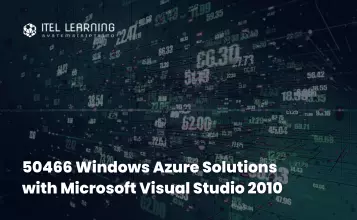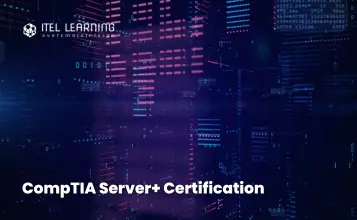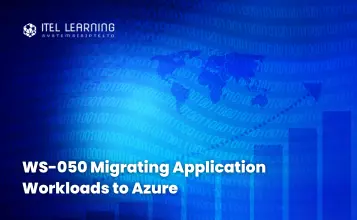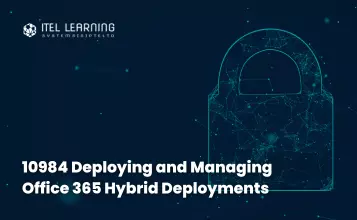Overview
This 3-day instructor-led course is an introduction to cloud computing and specifically Microsoft’s public cloud offering in Windows Azure. Windows Azure has been described by Microsoft as an operating system for “the cloud”. In this course, participants will explore this new cloud operating system and learn how to write, deploy and monitor .NET applications in Azure.
Prerequisites
Participants who wish to sign up for this course should meet the following prerequisites:
- Experience with Visual Studio 2010 or better is required.
- Knowledge and experience in a .NET language (C# or VB) is required.
- Knowledge of ASP.NET is required.
Who Should Attend?
This course is designed for .NET developers with Web application experience that are exploring to develop new applications or porting existing applications to Windows Azure.
Course Outline
- Define cloud computing.
- Learn the benefits of cloud computing.
- Understand the different types of cloud computing services.
- Explore where computing clouds might exist.
- Hear about potential concerns with cloud computing.
- Learn where cloud computing can and cannot be applied.
- Place Windows Azure in light of general cloud computing.
- Know how Windows Azure compares to other cloud environments.
Lab: Windows Azure Account Setup (Optional)
- See a simple Windows Azure application.
- Learn about the Microsoft data centers.
- Explore the hardware, servers and virtualization (the Fabric) that host cloud applications and data.
- Understand the role of the Fabric Controller in managing the Windows Azure cloud.
- Know the general architecture and components of the Windows Azure Platform.
- Understand the tools used to create and deploy Windows Azure services and data stores.
Lab: Introduction to Windows Azure
- Explore the purpose of Windows Azure Web roles.
- Understand how to create Web roles in a cloud service project.
- See how to configure a Web role.
- Learn how to test Web roles run in the Compute Emulator.
- Start exploring the Windows Azure API.
- Examine how to build Web roles with multiple Web sites
Lab: Building a Web Role
- Examine Windows Azure local storage.
- See how local storage differs from normal server file systems.
- Learn how to configure local storage.
- Understand the limitations of local storage and where/when to use it.
- Explore the API to access local storage.
- Learn about Windows Azure Drive (formerly X-Drive).
Lab: Using Local Storage
- Explore the various Windows Azure subscription administrators
- Understand Windows Azure OS Families and Guest OS Versions
- See how to Remote Desktop to a Windows Azure virtual machine
- Learn how to define a startup task for a role
Lab: Configuring and Using Remote Desktop
- Understand the purpose of Windows Azure Storage
- Learn how to create a Windows Azure Storage account
- Explore Windows Azure Storage costs
- Understand the Storage Emulator, how to use it, and how it is different from Windows Azure Storage
- See how to access Windows Azure Storage using both the REST API and the Storage Client Library
- Examine Windows Azure Storage Queues
- Learn how to get messages in and out of Windows Azure Queues
Lab: Learning Windows Azure Storage and Queues
- Understand the rationale for using blob storage. Learn about the different types of blobs: block and page blobs
- Examine blob storage containers and how they are used to organize and control access to blobs
- Explore how to access blob storage with both the Storage Client and REST API.
Lab: Using Blob Storage
- Explore Windows Azure Storage’s structural data service
- Understand the reason for table storage
- Examine the differences between table storage and traditional relational database (as exhibited by SQL Azure)
- Learn how to access table storage with both the Storage Client and REST API
- Understand entities as they relate to table storage
- Examine how to save and retrieve entities in table storage
Lab: Using Table Storage
- Explore the purpose of Windows Azure worker roles
- Understand how to create worker roles in a cloud service project
- See how to configure a worker role
- Learn how to test worker roles run in the Compute Emulator
- Learn how to use Windows Azure Storage queues and messages to communicate with worker roles
- Explore how to setup worker role endpoints
- Learn how to communicate with worker role internal and input endpoints
Lab: Building a Worker Role
- Learn what SQL Azure is and why you want to use it
- Understand SQL Azure in comparison to SQL Server and Windows Azure table storage
- Learn how to provision a SQL Azure server and databases
- Examine costs associated with SQL Azure
- See how to use familiar tools and APIs to work in SQL Azure
- Explore how to create and manage database objects in SQL Azure
- Know how to limit SQL Azure access
- Understand options for performing database backups
- See how to migrate data to SQL Azure
Lab: Introduction to SQL Azure
- Learn how to accomplish debugging and logging Windows Azure
- Examine Windows Azure Diagnostic Service
- Understand the role of the Diagnostic Agent process in the diagnostic service
- See how to transfer diagnostic service
- See how to transfer diagnostic data to Windows Azure Storage
- Lab: Diagnostics
Lab: Introduction to SQL Azure








